Saudi Arabia
[15] It is bordered by the Red Sea to the west; Jordan, Iraq, and Kuwait to the north; the Persian Gulf, Bahrain,[16] Qatar and the United Arab Emirates to the east; Oman to the southeast; and Yemen to the south.[51] At the end of the 4th millennium BC, Arabia entered the Bronze Age; metals were widely used, and the period was characterized by its 2 m high burials which were simultaneously followed by the existence of numerous temples that included many free-standing sculptures originally painted with red colours.[57] By 2200 BC, the centre of Dilmun shifted for unknown reasons from Tarout and the Saudi Arabian mainland to the island of Bahrain, and a highly developed settlement emerged there, where a laborious temple complex and thousands of burial mounds dating to this period were discovered.[77] In 1077–1078, an Arab sheikh named Abdullah bin Ali Al Uyuni defeated the Qarmatians in Bahrain and al-Hasa with the help of the Seljuq Empire and founded the Uyunid dynasty.[101] Although the revolt failed in its objective, the Allied victory in World War I resulted in the end of Ottoman suzerainty and control in Arabia, and Hussein bin Ali became King of Hejaz.Part of the response of the royal family was to enforce the much stricter observance of traditional religious and social norms in the country (for example, the closure of cinemas) and to give the ulema a greater role in government.He was succeeded by his brother, King Fahd, who added the title "Custodian of the Two Holy Mosques" to his name in 1986 in response to considerable fundamentalist pressure to avoid the use of "majesty" in association with anything except God.Although there was a dramatic change in the social and economic life of the country, political power continued to be monopolized by the royal family[75] leading to discontent among many Saudis who began to look for wider participation in government.[136] Saudi Arabia's geography is dominated by the Arabian Desert, associated semi-desert, shrubland, steppes, several mountain ranges, volcanic lava fields and highlands.[133] Lava fields in Hejaz, known locally by their Arabic name of harrat (the singular is harrah), form one of Earth's largest alkali basalt regions, covering some 180,000 square kilometres (69,000 sq mi).[167] The rule of the Al Saud faces political opposition from four sources: Sunni Islamist activism; liberal critics; the Shi'ite minority—particularly in the Eastern Province; and long-standing tribal and regionalist particularistic opponents (for example in the Hejaz).[197] The government's response to the crisis included strengthening the ulema's powers and increasing their financial support:[112] in particular, they were given greater control over the education system[197] and allowed to enforce the stricter observance of Wahhabi rules of moral and social behaviour.[170] Saudi Arabia is unique among modern Muslim states in that Sharia is not codified and there is no system of judicial precedent, allowing judges to use independent legal reasoning to make a decision.[223][224][225][226] On 20 May 2017, President Donald Trump and King Salman signed a series of letters of intent for Saudi Arabia to purchase arms from the United States totaling $350 billion over 10 years.[238] Saudi Arabia halted new trade and investment dealings with Canada and suspended diplomatic ties in a dramatic escalation of a dispute over the kingdom's arrest of women's rights activist Samar Badawi on 6 August 2018.[242][243] According to Iraq Prime Minister Nouri al-Maliki in March 2014, Saudi Arabia along with Qatar provided political, financial, and media support to terrorists against the Iraqi government.[244] Similarly, President of Syria Bashar al-Assad noted in 2015 that the sources of the extreme ideology of the terrorist organization ISIS and other such salafist extremist groups are the Wahabbism that has been supported by the royal family of Saudi Arabia.[250] In 2014, Sheikh Abdulaziz bin Abdullah Al-Sheikh, the Grand Mufti of Saudi Arabia and Chairman of the Council of Senior Scholars, issued a fatwa explicitly prohibiting joining or supporting terrorist organizations such as ISIS and al-Qaeda.[251] According to the U.S. Department of State, "Saudi Arabia plays an important role in working toward a peaceful and prosperous future for the region and is a strong partner in security and counterterrorism efforts and in military, diplomatic, and financial cooperation.[284][285] In line with Sharia in the Saudi justice system, the death penalty can theoretically be imposed for a wide range of offenses,[286] including murder, rape, armed robbery, repeated drug use, apostasy,[287] adultery,[288] witchcraft and sorcery,[289] and can be carried out by beheading with a sword,[287] stoning or firing squad,[288] followed by crucifixion (exposure of the body after execution).[296][297] As of June 2023, the kingdom has reportedly reversed its ban on women "becoming lawyers, engineers, or geologists" and established "aggressive affirmative action programmes", doubling the female labour force participation rate.[300] Migrants from Asia, Africa, and the Middle East are employed in the country's construction, hospitality, and domestic work sectors under the kafala system which human rights groups say is linked to abuses including modern slavery.[308] Saudi Arabia has a command economy based largely on petroleum; the oil industry accounts for roughly 63%[309] of budget revenue, 67%[310] of export earnings, and 45% of nominal GDP compared with 40% from the private sector.The unexpected impact of the COVID-19 pandemic on the economy, along with Saudi Arabia's poor human rights records, laid unforeseen challenges before the development plans of the kingdom, where some of the programmes under 'Vision 2030' were also expected to be affected.[329] In May 2020, the Finance Minister of Saudi Arabia admitted that the country's economy was facing a severe economical crisis for the first time in decades, because of the pandemic as well as declining global oil markets.[335] The government launched an extensive programme to promote modern farming technology; to establish rural roads, irrigation networks and storage and export facilities; and to encourage agricultural research and training institutions.[429] The Tatweer programme is reported to have a budget of approximately US$2 billion and focuses on moving teaching away from the traditional Saudi methods of memorization and rote learning towards encouraging students to analyse and problem-solve.[443] In May 2019, the then Saudi Minister of Health Tawfiq bin Fawzan AlRabiah received a global award on behalf of the Kingdom for combatting smoking through social awareness, treatment, and application of regulations."[484] Saudi Arabia is one of the few countries that have "religious police" (known as Haia or Mutaween), who patrol the streets "enjoining good and forbidding wrong" by enforcing dress codes, strict separation of men and women, attendance at prayer (salat) five times each day, the ban on alcohol, and other aspects of Sharia.[485][256] In the privacy of homes, behaviour can be far looser, and reports from WikiLeaks indicate that low ranked members of the ruling Saudi Royal family indulge in parties with alcohol, drugs, and prostitutes.







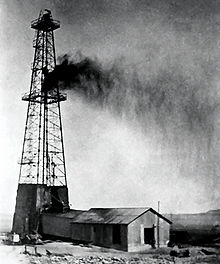










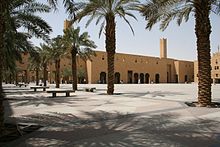





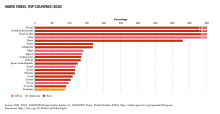




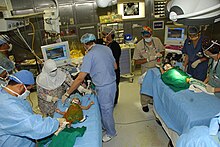


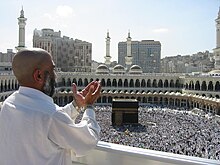









KSA (disambiguation)Arabic EmblemMuhammadshahadaan-Našīd al-Waṭaniyy as-SuʿūdiyyRiyadhDemonym(s)Governmentabsolute monarchySalmanCrown PrincePrime MinisterMohammed bin SalmanEstablishmentEmirate of DiriyahEmirate of NejdEmirate of RiyadhUnificationCurrent constitutionPopulationSaudi riyalCalling codeISO 3166 codeInternet TLDالسعودية.West AsiaMiddle EastArabian Peninsulafifth-largest country12th-largestRed SeaJordanKuwaitPersian GulfBahrainUnited Arab EmiratesGulf of AqabaIsraelits terrainarid desertmountainslargest cityJeddahholiest cities in IslamMedinaa population of almost 32.2 millionArab worldPre-Islamic ArabiaconqueringNorth AfricaCentralSouth AsiaIberiaRashidunUmayyadAbbasidFatimidnumerous other dynastiesKing AbdulazizEastern ArabiaSouth Arabiaa series of conqueststhe capture of RiyadhauthoritarianBasic LawIslamic stateIslam as its official religionWahhabiSunni Islamintervention in the Yemeni Civil Warregionalmiddlepetroleumdiscovered in the country in 1938third-largest oil producersixth-largest gas reservesWorld Bank high-income economySaudi economylargest in the Middle Eastnineteenth largest by nominal GDPseventeenth largest by PPPHuman Development Indextuition-free university educationfree universal health caredependency on foreign labourthird-largest immigrant populationthe world's youngest peopleGulf Cooperation CouncilUnited NationsOrganisation of Islamic CooperationArab LeagueShanghai Cooperation OrganisationHouse of SaudArab (etymology)Kingdom of HejazAbdulazizthe Hashemite Kingdom of JordanAl SaudArabic nameSaud ibn Muhammad ibn MuqrinMuhammad bin SaudHistory of Saudi ArabiaNational Museum of Saudi ArabiaAfricaBab-el-MandebHorn of AfricaQuaternaryLower PaleolithicOldowanNeolithicAl-MagarCanaan DogBronze AgeAcheuleanHail regionPaleolithicNefud DesertNational Museum of KoreaUbaid periodDosariyahDilmunTarout Islandrock-cutNabateanAl-'Ula

